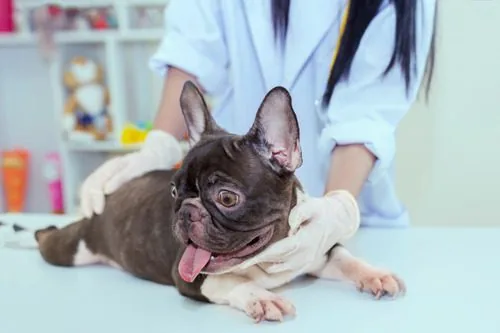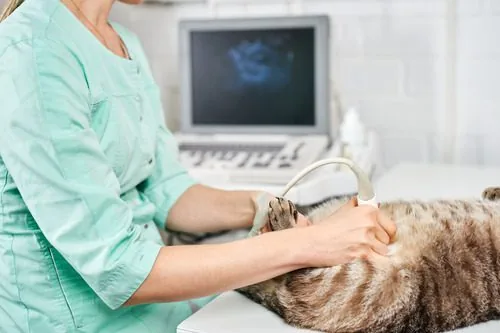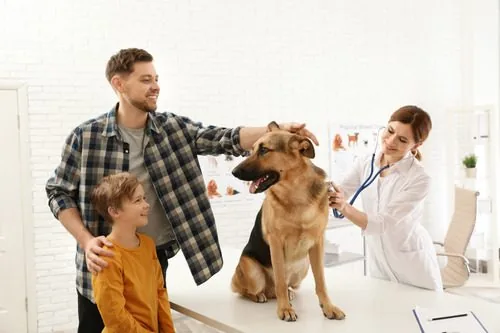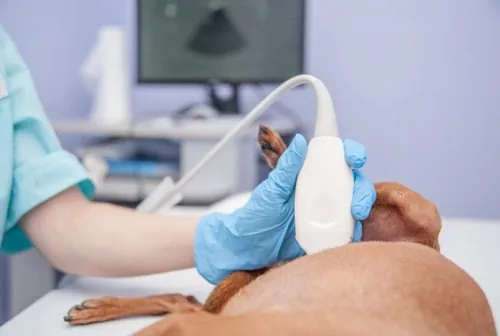What is a Dog Endoscopy, and Why is it Important?
As medical advancements continue to help humans, these improvements can also help your pet. With an endoscopy, your vet can diagnose and treat illnesses and address health concerns in your pup.
An endoscopy can facilitate the diagnosis of gastrointestinal issues, respiratory tract issues, and various other ailments. It is a minimally invasive way to eliminate a foreign object causing an obstruction. An endoscopy is an investigative tool that shows why your dog is experiencing symptoms.
There are many types of endoscopy procedures. Check out this article if you want to know what a dog endoscopy is and why it is important.
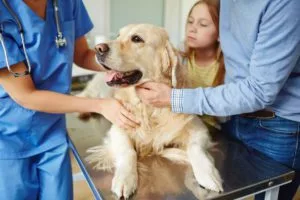
What is an Endoscope?
An endoscope is a long, flexible tube with a bendable tip. It has a light and a camera attached to examine a hollow organ or part of the body visually. It is placed in the stomach through the mouth or the colon through the rectum.
An endoscopy is the best option for investigating internal illnesses. It is performed for the inspection and sampling of abnormalities. An endoscope can also be utilized to remove foreign objects from the stomach.
Some examples of foreign items that your dog may swallow include:
- Clothes
- String
- Toys
- Plastic
An endoscopy can also be used for therapeutic purposes. It is also effective for diagnosing injuries from trauma or illness. It is minimally invasive and less obtrusive than surgery.
What Are the Different Kinds of Endoscopy?
The advancement of human medicine has dramatically improved veterinary medicine, as many of the same procedures are used between the two. Endoscopy is one of those procedures. There are several types of endoscopies. These include:
Respiratory Tract Endoscopy
There are three types of respiratory tract endoscopy procedures. These include rhinoscopy and tracheoscopy/bronchoscopy.
Rhinoscopy
This procedure is employed to examine clinical symptoms such as:
- Sneezing
- Nasal discharge
- Nasal congestion
- Nasal bleeding
The vet can see the nasal cavity and the back of the throat with a rhinoscopy. Samples of tissue are gathered for analysis, and foreign bodies in these areas can be removed.
Tracheoscopy/Bronchoscopy
These procedures examine the trachea and lower airways. Some of the conditions involved include:
- Chronic cough
- Respiratory problems
- Pneumonia
- Airway disease
It is the way that tracheal or lung diseases are often investigated. Samples are often gathered for review. To determine illness, the vet can see any problems from the inside or lower airways.
Upper GI Tract
There are three types of Upper GI Tract endoscopy. These include esophagoscopy, gastroscopy, and duodenoscopy.
Esophagoscopy
This procedure examines the esophagus. Some of the symptoms involved include:
- Regurgitation
- Difficulty swallowing
- Excessive drooling
This procedure is employed to diagnose diseases of the esophagus.
Gastroscopy
Gastroscopy looks at the inside of the stomach. Some of the conditions involved include:
- Chronic vomiting
- Anorexia
- GI bleeding
- Gastric masses
Samples are often gathered for evaluation.
Duodenoscopy
This method is used to help investigate chronic diarrhea. This procedure evaluates the first part of the small intestine, bile, and pancreatic ducts.
Lower Gastrointestinal Endoscopy
The two types of lower gastrointestinal endoscopy include colonoscopy and Ileoscopy.
Colonoscopy
Colonoscopies investigate the colon or the large intestine. For this procedure, you must prepare your dog by administering enemas and oral solution before the procedure. This process cleans out the colon, which allows for better evaluation of the large intestine. Some of the symptoms involved include:
- Diarrhea
- Blood in stool
- Constipation
Samples are often gathered for evaluation.
Ileoscopy
This procedure views the last part of the small intestine. It is beneficial for pups with small intestinal disease.
Urinary and Genital Tract Endoscopy
There are three types of urinary and genital tract endoscopy procedures. These include cystoscopy, urethroscopy, and vaginoscopy.
Cystoscopy, Urethroscopy, Vaginoscopy
These procedures examine the urinary bladder, urethra, and vagina. Some of the conditions involved include:
- Chronic or recurring urinary tract disease
- Urinary stones
- Masses
- Polyps
Sometimes polyps or stones can be removed during endoscopy.
Abdominal Endoscopy
One type of abdominal endoscopy is Laparoscopy.
Laparoscopy
Laparoscopy involves the examination of the abdominal organs. The organs of the abdomen include:
- Gall Bladder
- Liver
- Kidneys
- Pancreas
- GI Tract
The most common reason this procedure is performed is for a liver biopsy.
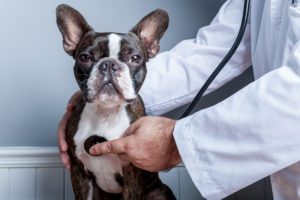
Why is Endoscopy Important for Dogs?
Endoscopy is a breakthrough procedure because it gives the pet parent another option other than surgery. If your vet believes your dog may have an internal problem, it is your best bet. It is far less intrusive than a surgical procedure, and it is also less traumatic. It is essential when there are gastrointestinal issues at work.
Some symptoms indicate that your pup may need an endoscopy are unexplained weight loss, unusual lumps, and gagging after coughing. These are not the only indicators that have to be evaluated. The vet should also investigate:
- Vomiting
- Diarrhea
- Abdominal pain
- Labored breathing
- Abnormal panting
- Nasal congestion
Your vet will perform a checkup on your dog. It could include bloodwork and ultrasound. This procedure can help to identify the internal issue your dog is struggling with. However, these diagnostics alone may not be enough to determine the underlying problem, which is why an endoscopy is the next step.
What Does an Endoscopy Involve?
An endoscopy involves anesthesia. Your vet will prep your pup for anesthesia, which means they will take blood to ensure your dog can handle anesthesia. It is also necessary for your dog to have an empty stomach for the procedure. A complete twelve-hour fast is necessary if your dog’s stomach is being examined. Your pup’s temperature and heart rate will be monitored.
If everything checks out, the doctor will give the dog anesthesia, and the endoscope will be inserted. A biopsy can be performed to help confirm a diagnosis, such as cancer or gastrointestinal problems. A tissue sample is sent out for microscopic examination. Once the issue has been detected, your vet will be able to find out why your pup is having symptoms, and you can discuss treatment options.
If your dog swallowed a foreign object and has an obstruction, an endoscopy can be performed in place of surgery to remove the object. The procedure can potentially save your dog’s life.
What Are the Benefits and Drawbacks of Endoscopy?
As mentioned earlier in this article, the most valuable thing about an endoscopy is that it is a much less invasive procedure than surgery. It typically does not require an overnight stay in a vet hospital. Endoscopy is also a procedure that does not necessitate an abdominal incision, precipitating a longer healing process.
Another advantage is that treatments can be given immediately after an endoscopy. Specific treatments cannot be administered directly after surgery, as they can interfere with healing from abdominal surgery. Endoscopy has an extremely low mortality rate, as surgeries pose more risk.
However, one of the disadvantages is that endoscopy has its limitations. An endoscopy will not work if the abnormality is deeper within the gastrointestinal tract, as the scope will not reach that far. Also, an endoscopy may not be able to remove the entire obstruction, which means that surgery will be necessary to complete the removal of the foreign object.
Conclusion
An endoscopy is an important procedure because it is a safer, less invasive alternative to surgery, assuming that surgery is not the only option. Using an endoscope can show an underlying health concern that needs to be addressed with treatment, which can save or extend the life of your sweet fur baby.
At Veterinary Healthcare Associates, our doctors are dedicated in providing excellent care for your pet. If you notice that your pet is experiencing any of the symptoms mentioned above or if you have any questions, give us a call at (863) 324-3340. We’re here to help.
Recent Posts
Why You Should Build Your Veterinary Career at Veterinary Healthcare Associates
Why You Should Build Your Veterinary Career at Veterinary Healthcare Associates Embarking on a veterinary career is…
French Bulldog Nose Surgery: Everything You Need to Know
French Bulldog Nose Surgery: Everything You Need to Know French Bulldogs are adored for their playful personalities…
Veterinary Diagnostic Imaging: How It Keeps Pets Healthy
Veterinary Diagnostic Imaging: How It Keeps Pets Healthy When it comes to protecting your pet’s health, veterinary…
How Much Does Hyperbaric Oxygen Therapy (HBOT) for Dogs Cost?
How Much Does Hyperbaric Oxygen Therapy (HBOT) for Dogs Cost? When your dog is facing a health…
Cat Sonogram & Ultrasound: Everything You Need to Know
Cat Sonogram & Ultrasound: Everything You Need to Know Cats have a way of concealing discomfort, making…
About Veterinary Healthcare Associates
Veterinary Healthcare Associates in Winter Haven, FL, was established over 30 years ago as Maxwell Animal Clinic by Dr. John Maxwell. Maxwell Animal Clinic was a one-doctor general practice offering preventive care, dentistry, and standard surgical services to the community. As the years passed, Maxwell Animal Clinic evolved into a thriving 10-doctor general, specialty referral, and emergency veterinary practice.


